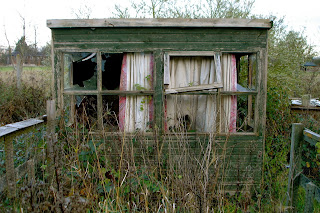Slerch Birds and the Oranix and the Zapatistas
By Marc D. Ruvolo
and
Subcomandante Insurgente Marcos
Bezel says that life is like a Slerch bird.
He also says that there are those who eat Slerch birds immature, those who eat them dead, and those who eat them in flight.
Bezel says that there are some, very few, who can choose how they eat a Slerch bird: either on a blinding festival day, awash in downy spines and bone shard beads, or baked in a clay pot with spicy custard or on the wing or in a ditch or in one of those odious (to Bezel) free
Slerch nutrient drinks we men pass out to the indigenous peoples.
Bezel says that the indigenous people feel obligated to eat dead Slerch birds and that the consumption of immature birds is imposed upon the young and that small children are promised a soaring, beautiful bird made of light when in reality it's already been poisoned with squirming grubs of deceit. He says that the female Oranix are told they will be given a share of the plumpest, finest birds but only receive a single moldering feather.
Bezel says that life is like a Slerch bird.
He also says that when an Oranix is faced with a sky-blackening flock of Slerch, he stands straight, vigilant, his hereditary blade ready, and with a skillful slice, he cuts a single perfect bird from the roiling mass.
Bezel says that this Oranix never intends to eat the bird, nor is he interested in whether the Slerch is immature, dead, or in the blessed and sublime state of eternal flight.
Bezel says that while the wet, pulsing cilia of the Slerch bird is exposed, the Oranix, with great care, removes the egg sacs, and then gently places them in its own leathery pouch. Next, says Bezel, the Oranix warms and kneads the fragile, tiny egg sacs, bathing them with salty brine, and guards their growth.
Bezel says that the Oranix will not live to see its covey of Slerch birds fly, much less blot out the faces of newly risen and weeping harvest moons. This he knows.
Bezel says that that particular Oranix nurtured the eggs so that one day, when he is not here, just about anyone could look to their portion of the rearing sky and feel free to cut out and consume their own Slerch bird, either on a gleaming festival day, awash in downy spines and bone shard beads, or baked in a clay pot with spicy custard or on the wing or in a ditch or with one of those odious (to Bezel) free Slerch nutrient drinks we men pass out to the indigenous peoples.
Bezel says that this is the difference between the Oranix and Humanity: where we see just a bird, the Oranix see an egg, and themselves inside it, and then selflessly offer up the gift of their leathery pouches to guard it.
This he knows.
Outside of that, says Bezel, we Oranix could be your distant cousins. If anything, though, we're just brighter, friendlier, and, he adds slyly, I believe we laugh more.
After I remove my bulky respirator, I set the dull gunmetal crate that I have carried for so long on the rough, central table of Bezel's hut. I'm careful to place it on his good side, where he can see it, as one of his ocular stalks was recently damaged while protesting the lack of Slerch for the common Oranix. Embossed on the crate's face is the likeness of Emiliano Zapata, our greatest and most beloved saint. The seals of the box hiss loudly as I open them one by one.
Bezel leans close, looking inside. What is it, friend Durito? he says, a tinge of wonder in his odd voice.
It's called an apple, I say, friend Bezel.
Ah, says Bezel, yes.
Removing the apple from its crate, I polish it gently against my coat.
Let me tell you a story, I say.
#####














